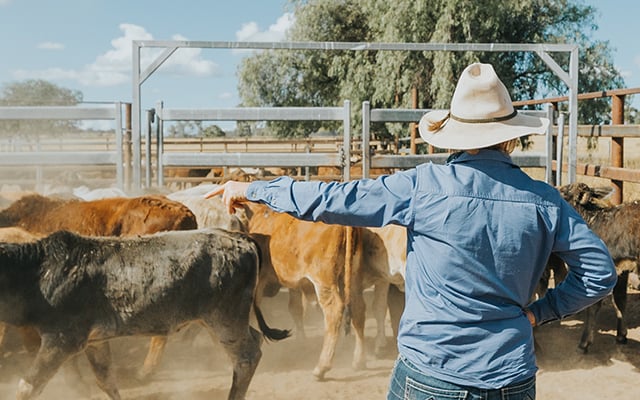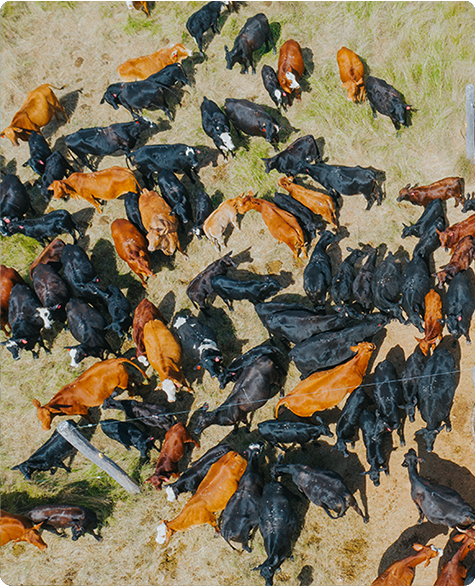Valued at over $1.3 billion in 2022, the live export industry supports the livelihoods of many rural and regional Australians, as well as creating employment in overseas destination markets.
Under Australian Government legislation, livestock exporters are responsible for ensuring the wellbeing of their animals through the entire export process – in this country and overseas. Exporters’ livelihoods depend on producing healthy and content livestock, and meeting community expectations around animal welfare. Ensuring good animal health and welfare during the live export process means that livestock:
- Have been assessed and are fit to travel
- Are provided with appropriate food, water, ventilation and protection from adverse weather>
- Remain fully traceable at all times within approved supply chains.
During all live export voyages, animals are cared for by accredited stock people and during long-haul voyages, an Australian Government-accredited veterinarian is also present. You can learn more about live export shipping through our virtual tour here.
What animal welfare regulations must Australian livestock exporters follow?
Australia has some of the most rigorous live export standards in the world.
Australia is the only country exporting live animals that regulates standards of animal welfare in other countries and invests in training and auditing to ensure those standards are met.
The entire livestock export process is regulated by the Australian Government under two main regulatory systems: the Australian Standards for the Export of Livestock (ASEL) and the Exporter Supply Chain Assurance System (ESCAS).
The ASEL outlines the animal health and welfare requirements from farm through to the discharge of animals in the country of destination. It also includes strict reporting requirements for exporters to ensure the Australian Government can monitor animal health and welfare throughout a voyage and respond to emergency situations if they arise.
ESCAS requires livestock exporters to prove that livestock remain within approved supply chains at all times from discharge within the importing country to the processing of animals. Failure to comply with ESCAS can result in the Australian Government revoking the exporter’s licence, applying conditions to a licence, refusing future consignments or imposing criminal sanctions.
Animals must also be handled and processed in accordance with the internationally accepted requirements for animal welfare established by the World Organisation for Animal Health (OIE).
How does the live export industry monitor animal welfare?
To monitor and assess animal welfare on livestock ships, the industry has recently identified 26 animal welfare indicators that demonstrate the welfare status of cattle and sheep being exported by sea. The indicators provide information on health and behaviour, such as activity and rest, mental state, heat responses, feeding behaviour and human-animal interactions. The welfare indicators have been largely adopted, creating a best-practice approach to animal welfare monitoring.
The industry also continues to invest in projects that are focused on improving animal health, welfare and productivity throughout the livestock export supply chain. The Livestock Export Program, a partnership between LiveCorp and Meat & Livestock Australia, allocates around 70% of its research, development and extension budget to animal welfare. (Source)
Initiatives include supporting local feedlot and abattoir workers in export countries with education on animal welfare practices, improving animal husbandry techniques and using advanced technology to enhance the on-board environment.
Did you know?
- Exporters are responsible for the welfare of livestock at all times, even after they are sold and arrive in other countries. (Source)
- Around 99.9% of cattle exported from Australia arrive safely at their destination – a rate that has been maintained for more than a decade. (Source)
- In Indonesia, Australia’s biggest live export market, Animal Welfare Officers are employed by feedlots and abattoirs to provide in-house training and monitor how livestock are treated. (Source)







